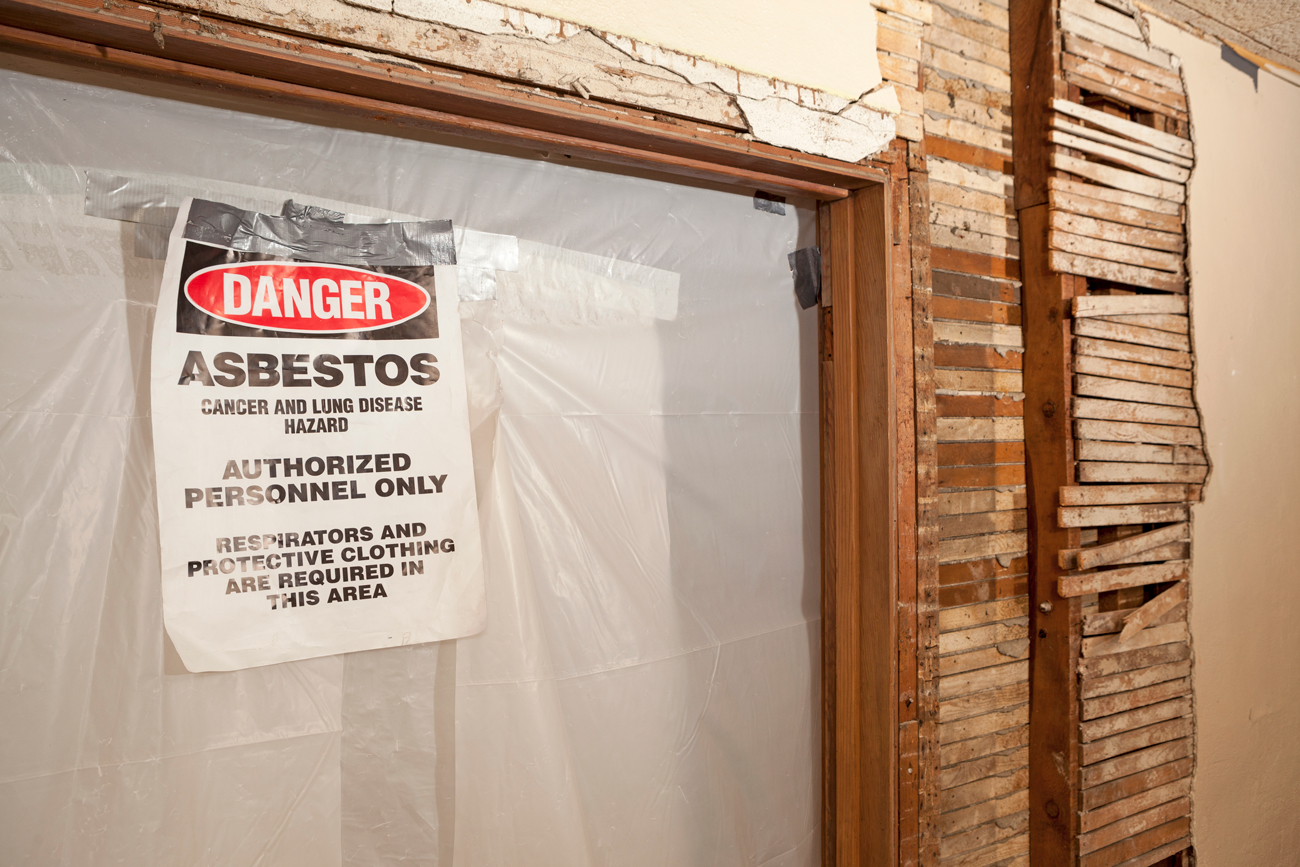
Photo credit: BanksPhotos -iStock / Getty Images Plus
By Rosie Rosati, guest contributor
As a homebuyer, it’s easy to understand the appeal of investing in an older home. After all, it’s the perfect opportunity to tackle a few DIY projects and renovations to give the place the custom touch you’ve always imagined. Although this can seem like an exciting endeavor, new owners may get ahead themselves without realizing their house may be harboring toxins from decades ago.
It’s important to understand the dangers of asbestos during home improvement projects and how to reduce exposure risks.
Measuring Your Risk
Asbestos is a natural silicate mineral that was revolutionary for the building trade until its carcinogenic nature was discovered. This toxin was once widely-used by the construction industry due to its resilience and ability to withstand chemicals and high temperatures. Although its health risks were discovered as early as the 1920s, the United States continued producing, importing and manufacturing asbestos-containing consumer products for decades.
Researchers concluded in 1960 that asbestos exposure could cause a wide range of long-term diseases, including asbestosis, lung cancer, and a deadly form of cancer known as mesothelioma. As more tradesmen came forward with asbestos-related illnesses, this mineral became known as a primary source of occupational cancer.
The mineral is heavily regulated today, but millions of people are still vulnerable to exposure due to its expansive use in residential homes and buildings.
Asbestos is only considered dangerous when contaminated materials have been worn down or damaged which unfortunately, is a standard part of most renovation or remodeling work.
Any sanding, grinding, sawing, drilling, buffing, or physical impact may cause these fibers to become airborne and easily ingested or inhaled by anyone in the general proximity.
What Homeowners Need to Know
Asbestos is nearly impossible to identify on your own because it’s often mixed within building products, but it is possible to identify a hazardous situation and take appropriate preventative action.
Before getting involved with any sort of home improvement project, you should always double-check that your property has been recently inspected by a trained professional. This simple step is especially important if you reside in a home built more than 40 years ago and has visible signs of aging. This bit of precaution could save you from developing an asbestos-related illness years later.
You should be aware of common products that have a history of containing the toxin and monitor their condition for any sort of wear and tear. Keep an eye on old insulation, ceiling tiles, vinyl flooring, joint compounds, door gaskets, furnaces, roof shingles, electrical wiring, fireproof products, and more.
Asbestos is known to be a significant threat when it is “friable,” meaning it can be easily crumbled or crushed by hand. Spray-on insulation and spray-on ceiling textures are prime examples of products that once contained friable asbestos and have been found within residential homes today.
Unlike floor tiles and cement that must endure long-term deterioration before asbestos fibers are loosened, the slightest amount of pressure can instantly release these fibers, allowing them to be carried throughout the air and dust indoors.
Do not panic and try to remove any materials you think are toxic, as this will only do more harm than good.
Instead, block off the area and avoid any activity, including sweeping or vacuuming, which can exacerbate the situation and cause toxic dust and debris to travel even further throughout the house.
Restrict anyone from going near the area until a professional can take samples to confirm it contains asbestos. If the toxin is present and appears to be hazardous, the licensed professional can safely remove the toxin from your home.
 ABOUT THE AUTHOR: Rosie Rosati is with the Mesothelioma and Asbestos Awareness Center. She is a health advocate for anyone impacted by the aggressive form of cancer known as mesothelioma. She dedicates her time to educating the public on where asbestos is found today and how to prevent exposure. Her ultimate goal is to connect anyone affected by this rare diseases with the resources and support they deserve.
ABOUT THE AUTHOR: Rosie Rosati is with the Mesothelioma and Asbestos Awareness Center. She is a health advocate for anyone impacted by the aggressive form of cancer known as mesothelioma. She dedicates her time to educating the public on where asbestos is found today and how to prevent exposure. Her ultimate goal is to connect anyone affected by this rare diseases with the resources and support they deserve.
[ad_2]
Source link
